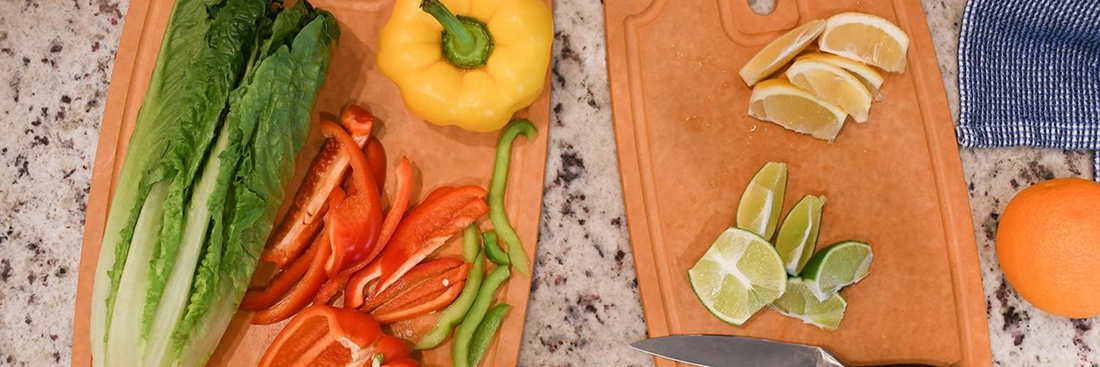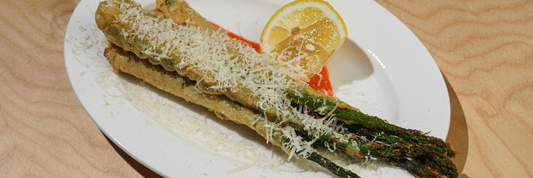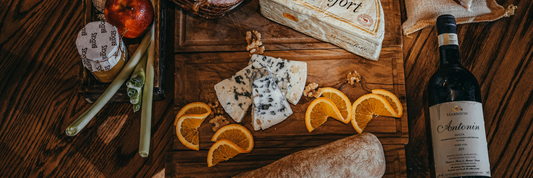Cutting boards are indispensable kitchen tools, available in a wide range of materials like wood, plastic, bamboo, and composite. Among these, composite cutting boards have gained popularity for their unique blend of durability, functionality, and eco-friendliness. In this article, we’ll dive deep into what composite cutting boards are, their advantages and drawbacks, and how to choose the best one for your needs.
- Kitchen Cutting Board : Definition, Uses, and Benefits
- Teak Cutting Boards: Benefits, Care Tips, and Why You Need One
- How to Make a Cutting Board: Step-by-Step DIY Guide
- How to Clean Cutting Boards with Vinegar, Bleach and Baking Soda
What Are Composite Cutting Boards?
Composite chopping boards are made from layers of wood fibers or paper that are bonded together using food-safe resin under high pressure. The result is a dense, durable surface that mimics the appearance of natural wood while offering the performance of synthetic materials.
Advantages of Composite Cutting Boards
Durability
Composite cutting boards are designed to withstand heavy-duty usage without cracking, warping, or splintering. They’re ideal for both home kitchens and professional settings.
Knife-Friendly
Unlike glass or overly hard surfaces, composite boards are gentle on knife blades. This means your knives stay sharper longer, reducing the need for frequent honing or sharpening.

Heat Resistance
Many composite boards can handle high temperatures, making them suitable as trivets for hot pots and pans. This versatility sets them apart from traditional wood and plastic boards.
Low Maintenance
Composite boards are easy to clean with soap and water. They’re non-porous, so they won’t absorb stains, odors, or bacteria. Some are even dishwasher-safe, adding an extra layer of convenience.
Eco-Friendly
Because they’re often made from recycled wood fibers or paper, composite boards are a more sustainable choice compared to plastic options.
Drawbacks of Composite Cutting Boards
Price
Composite boards can be more expensive than plastic or bamboo alternatives. However, their longevity often makes them a cost-effective investment over time.
Weight
Due to their density, composite chopping boards are heavier than plastic or thin wood boards. This can make handling and storage slightly less convenient.
Surface Hardness
While composite boards are knife-friendly, they’re harder than natural wood boards, which may cause slight wear on knives over extended use.

How to Choose the Right Composite Cutting Board
- Size and Thickness: Choose a size that fits your kitchen space and food prep needs. Thicker boards are more durable but heavier, while thinner ones are lightweight and easier to store.
- Brand Reputation: Opt for trusted brands like Epicurean, Richlite, or Totally Bamboo for reliable quality and food safety standards.
- Maintenance Requirements: Look for dishwasher-safe options if low-maintenance cleaning is a priority.
- Specific Features: Consider boards with juice grooves for cutting meats or reversible designs for versatile use.

Cutting Board Sizes: How to Choose the Perfect Fit for Your Kitchen
FAQs About Composite Cutting Boards
Are Composite Cutting Boards Non-Toxic?
Yes, composite cutting boards are generally non-toxic. Reputable brands use food-safe resins to bind the materials, ensuring no harmful chemicals leach into your food.
Do Composite Cutting Boards Have Microplastics?
No, composite cutting boards do not contain microplastics. They’re made from natural materials like wood fibers or paper, making them an environmentally friendly alternative to plastic boards.
Conclusion
Composite cutting boards are an excellent choice for anyone seeking a durable, eco-friendly, and low-maintenance kitchen tool. While they may have a higher upfront cost, their longevity and performance make them worth the investment. Whether you’re a home cook or a professional chef, a composite cutting board can elevate your food preparation experience.




